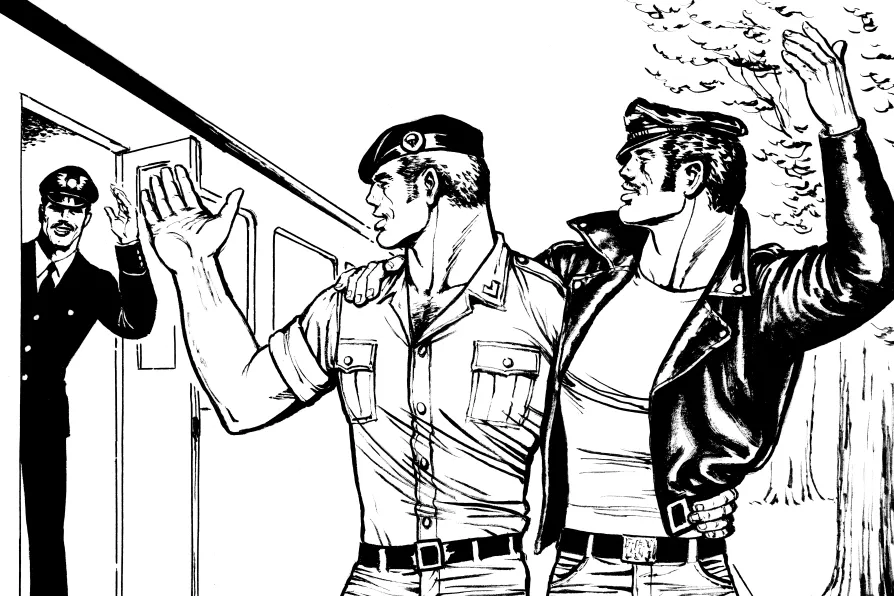RICHARD MURGATROYD enjoys a readable account of the life and meditations of one of the few Roman emperors with a good reputation
‘I wanted my drawings to show gay men being happy and positive’
Tom King pays tribute to the subversive illustrator TOM OF FINLAND


THROUGHOUT post-classical art, there’s a venerable tradition of male erotica hiding in plain sight.
Michelangelo’s David, Fabre’s Death of Abel and numerous scantily clad — if a little punctured — Saint Sebastians, to name but a few, indulged homosexual desire as much as they conveyed religious sentiment, and often more so.
For the most part, these works were only ever gazed upon by an elite, privileged few. But, as John Berger pointed out, mass-production democratised the image as much as the printing press did the written word.
Similar stories

Ben Cowles speaks with IAN ‘TREE’ ROBINSON and ANDY DAVIES, two of the string pullers behind the Manchester Punk Festival, ahead of its 10th year show later this month

The Morning Star sorts the good eggs from the rotten scoundrels of the year

TOMASZ PIERSCIONEK relishes a collection of cartoons that focus on Palestine from the period 1917 to 1948

Two new releases from Burkina Faso and Niger, one from French-based Afro Latin The Bongo Hop, and rare Mexican bootlegs










